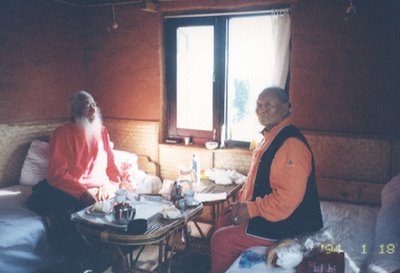Kaccayanagotta Sutta
To Kaccayana Gotta (on Right View)
(Samyutta Nikaya 12.15)
Dwelling at Savatthi... Then Ven. Kaccayana Gotta approached the Blessed One and, on arrival, having bowed down, sat to one side. As he was sitting there he said to the Blessed One: "Lord, 'Right view, right view,' it is said. To what extent is there right view?"
"By & large, Kaccayana, this world is supported by (takes as its object) a polarity, that of existence & non-existence. But when one sees the origination of the world as it actually is with right discernment, 'non-existence' with reference to the world does not occur to one. When one sees the cessation of the world as it actually is with right discernment, 'existence' with reference to the world does not occur to one.
"By & large, Kaccayana, this world is in bondage to attachments, clingings (sustenances), & biases. But one such as this does not get involved with or cling to these attachments, clingings, fixations of awareness, biases, or obsessions; nor is he resolved on 'my self.' He has no uncertainty or doubt that just stress, when arising, is arising; stress, when passing away, is passing away. In this, his knowledge is independent of others. It's to this extent, Kaccayana, that there is right view.
"'Everything exists': That is one extreme. 'Everything doesn't exist': That is a second extreme. Avoiding these two extremes, the Tathagata teaches the Dhamma via the middle: From ignorance as a requisite condition come fabrications. From fabrications as a requisite condition comes consciousness. From consciousness as a requisite condition comes name-&-form. From name-&-form as a requisite condition come the six sense media. From the six sense media as a requisite condition comes contact. From contact as a requisite condition comes feeling. From feeling as a requisite condition comes craving. From craving as a requisite condition comes clinging/sustenance. From clinging/sustenance as a requisite condition comes becoming. From becoming as a requisite condition comes birth. From birth as a requisite condition, then aging & death, sorrow, lamentation, pain, distress, & despair come into play. Such is the origination of this entire mass of stress & suffering.
"Now from the remainderless fading & cessation of that very ignorance comes the cessation of fabrications. From the cessation of fabrications comes the cessation of consciousness. From the cessation of consciousness comes the cessation of name-&-form. From the cessation of name-&-form comes the cessation of the six sense media. From the cessation of the six sense media comes the cessation of contact. From the cessation of contact comes the cessation of feeling. From the cessation of feeling comes the cessation of craving. From the cessation of craving comes the cessation of clinging/sustenance. From the cessation of clinging/sustenance comes the cessation of becoming. From the cessation of becoming comes the cessation of birth. From the cessation of birth, then aging & death, sorrow, lamentation, pain, distress, & despair all cease. Such is the cessation of this entire mass of stress & suffering."
Translated from the Pali by Thanissaro Bhikkhu









